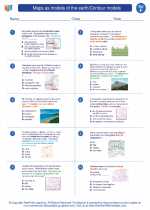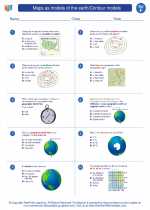Carboniferous Period
The Carboniferous period, also known as the "age of coal," lasted from about 359 to 299 million years ago. It is named after the vast amount of carbon-rich coal deposits that formed during this time.
Climate
The Carboniferous period was characterized by a warm and humid climate, with extensive swamps and wetlands covering much of the Earth's surface. This lush environment provided ideal conditions for the growth of large, dense forests.
Flora
The dominant plants of the Carboniferous period were early vascular plants, including lycophytes (such as tree-like Lepidodendron and scale trees), sphenophytes (such as horsetails), and ferns. These plants played a crucial role in the formation of coal deposits, as their organic matter accumulated and was compressed over millions of years.
Fauna
On land, the Carboniferous period saw the emergence of early tetrapods, which were the first vertebrates to walk on land. In the swamps, large insects such as dragonflies and early amphibians thrived. In the oceans, diverse marine life, including brachiopods, crinoids, and early sharks, flourished.
Study Guide
- What geological feature is the Carboniferous period named after?
- Describe the climate of the Carboniferous period.
- Which plant groups were dominant during the Carboniferous period?
- What role did these plants play in the formation of coal deposits?
- What were the main types of fauna present during the Carboniferous period?
- How did the Carboniferous period contribute to the formation of fossil fuels?
◂Science Worksheets and Study Guides Sixth Grade. Maps as models of the earth/Contour models

 Worksheet/Answer key
Worksheet/Answer key
 Worksheet/Answer key
Worksheet/Answer key
 Worksheet/Answer key
Worksheet/Answer key
 Vocabulary/Answer key
Vocabulary/Answer key
 Vocabulary/Answer key
Vocabulary/Answer key
 Vocabulary/Answer key
Vocabulary/Answer key
 Vocabulary/Answer key
Vocabulary/Answer key
 Vocabulary/Answer key
Vocabulary/Answer key
